Shallots are a great ingredient to keep on hand because of their subtle sweet and savory notes. Enjoy them raw in salad dressings and vinaigrettes or cooked with your favorite veggies. Learn the best way to cut this versatile allium for your home cooking.
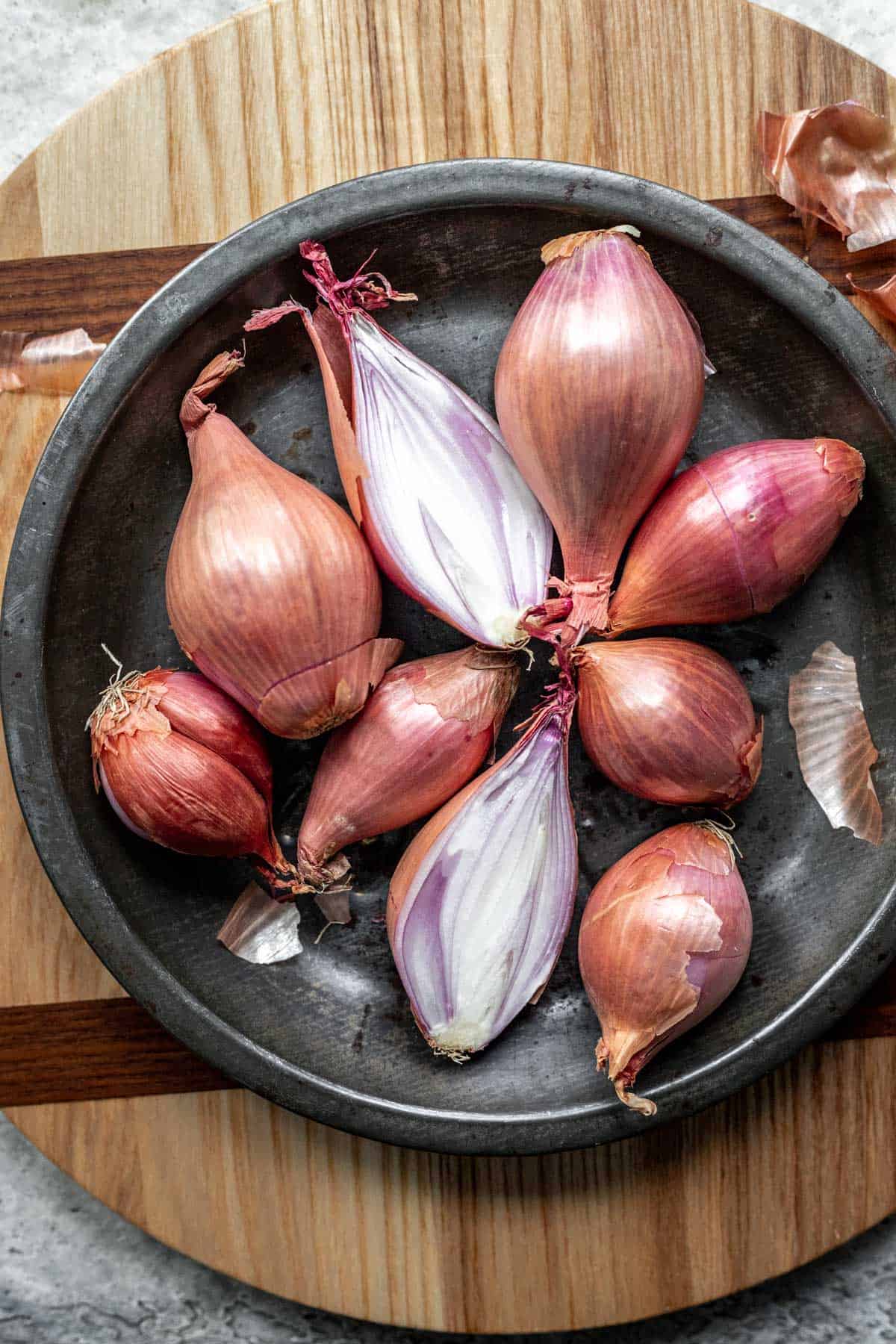
Jump to:
📋 What Are Shallots?
- In the Allium family - Shallots are in the allium family, making them closely related to other bulbous herbs like onions, garlic, leeks, chives, and scallions or spring onions.
- They grow in small clusters - Similar to garlic heads that break into smaller garlic cloves, shallots typically break apart into smaller, individual bulbs once the outer papery skin is removed.
- Similar in color to red onion - They have a reddish, copper colored skin with white and purple flesh.
- Mild in flavor - Although they look like a smaller version of an onion, shallots are much less pungent in flavor and cook down much more easily, making them great for adding subtle flavor to dishes like dressings, sauces, or marinades.
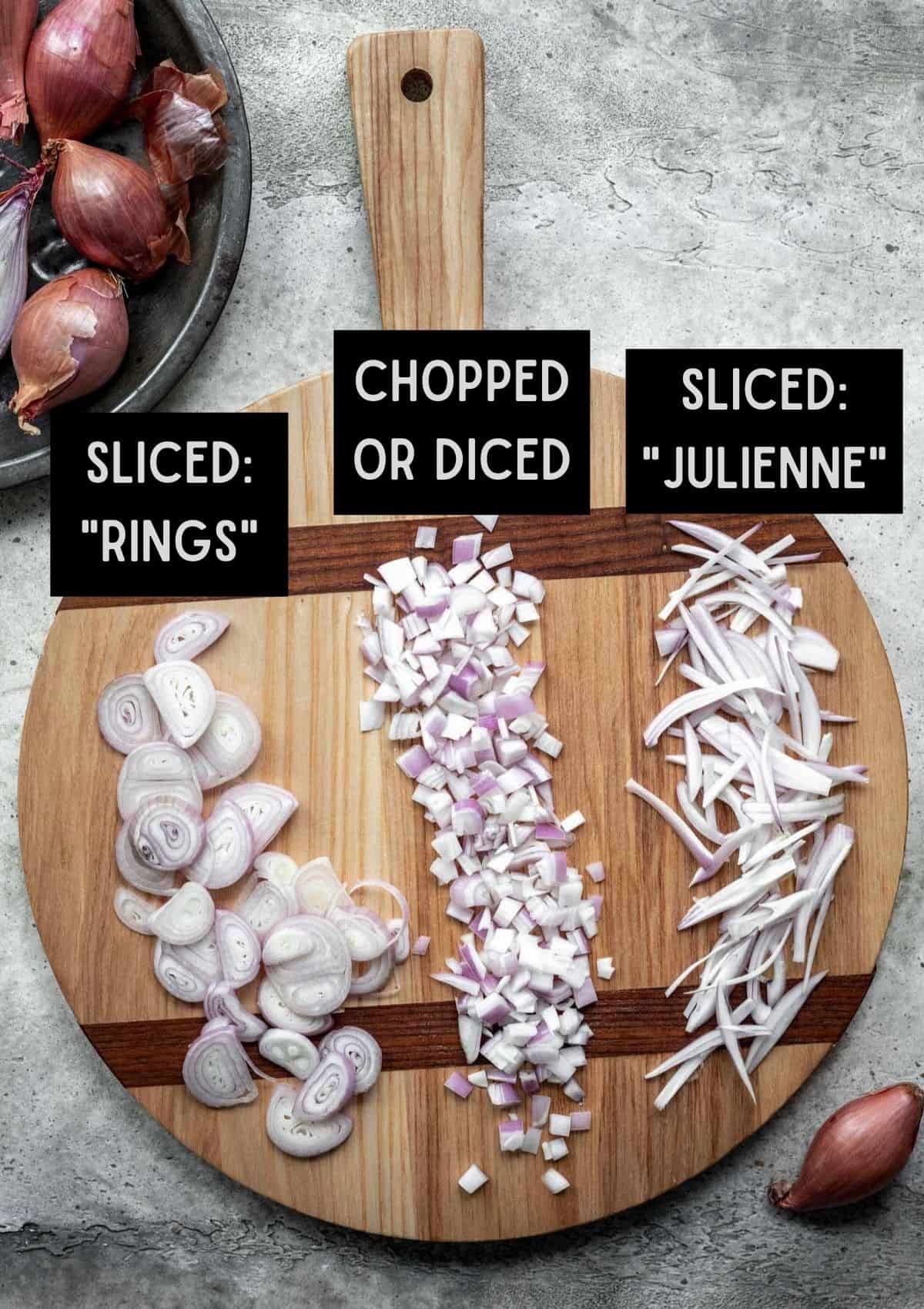
⁉️ What You'll Need
- Sharp chef's knife - One of the most important tools in the kitchen. It may be counterintuitive, but using a small knife or a dull knife is going to make it more likely that you will cut yourself and have difficulty cutting your shallots uniformly. A good chef's knife should glide through whatever you are cutting without resistance and feel comfortable in your hand.
- Cutting board - The larger the better! Using a small cutting board is going to make your workspace feel crowded and take you longer to prep.
- A mixing bowl - I like to use a mixing bowl for any discarded skin or end pieces. This helps keep my workspace clutter free and makes for easy clean up!
🔪 How to Prepare the Shallots
There are a couple of different methods to prepare shallots for chopping:
- Chop and peel
- Boil and blanch
This first chop and peel method is very similar to how you likely prepare onions.
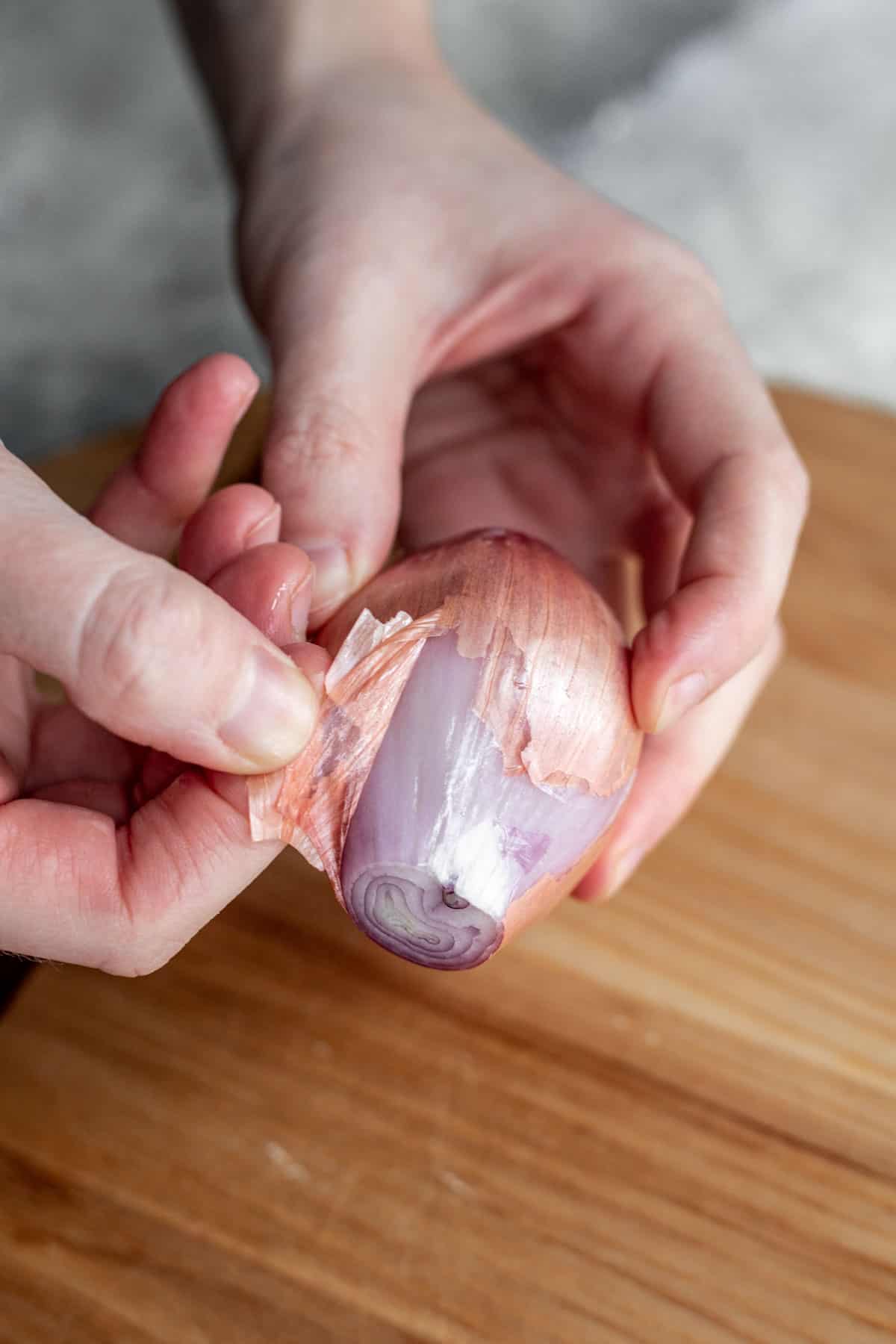
- Remove one or both ends with a knife, exposing the inner bulbs of the shallot. If you are dicing, I recommend keeping the root intact and only cutting off the top end. This will make it simpler to keep the shallot together for uniform dicing.
- Peel away all outside layers of papery skin.
This method will likely be the most common way you'll prepare them, as most recipes only call for 1-2 shallots and it is quick and easy enough to do.
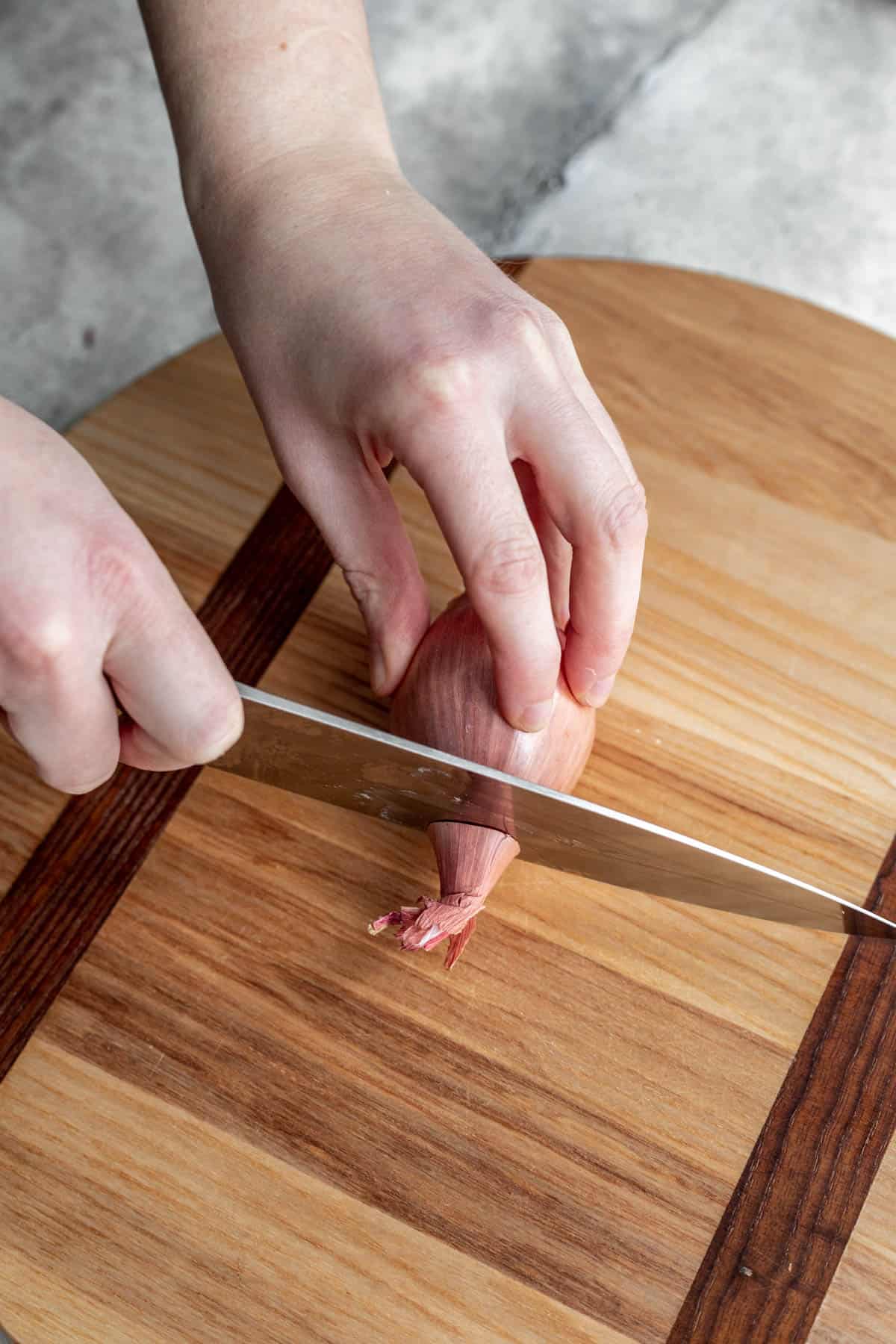
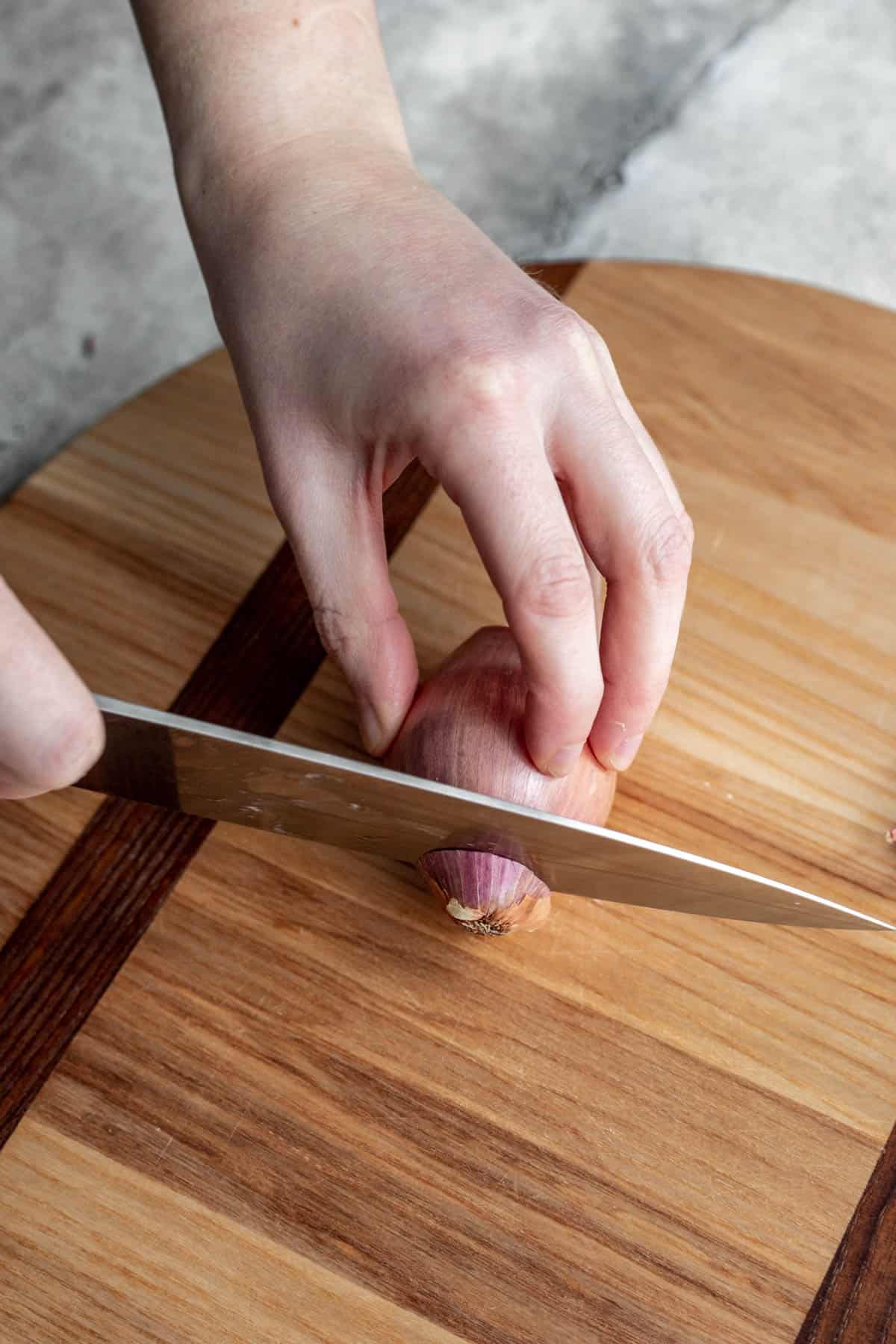
If you are using a recipe that uses a significant amount of shallots or you find them to be difficult to peel, you may prefer the boil and blanch method. It will soften the outside layer of their skin, making them simpler and quicker to peel.
- Add the shallots to boiling water and boil for a couple of minutes (2-5 minutes depending on the size of the bulbs).
- Using a slotted spoon, remove the bulbs and immediately transfer to a bowl of ice water for 1 minute. This will stop the cooking process.
- Pat them dry with a clean tea towel or paper towel.
- Make a small slit in the skin of the shallots, then peel and remove the outer papery layer.
📓 How to Slice Rings
Slicing shallots into rings is the easiest, most simple way to cut them.
Simply keep the shallot fully in tact, then slice transversely into rings.
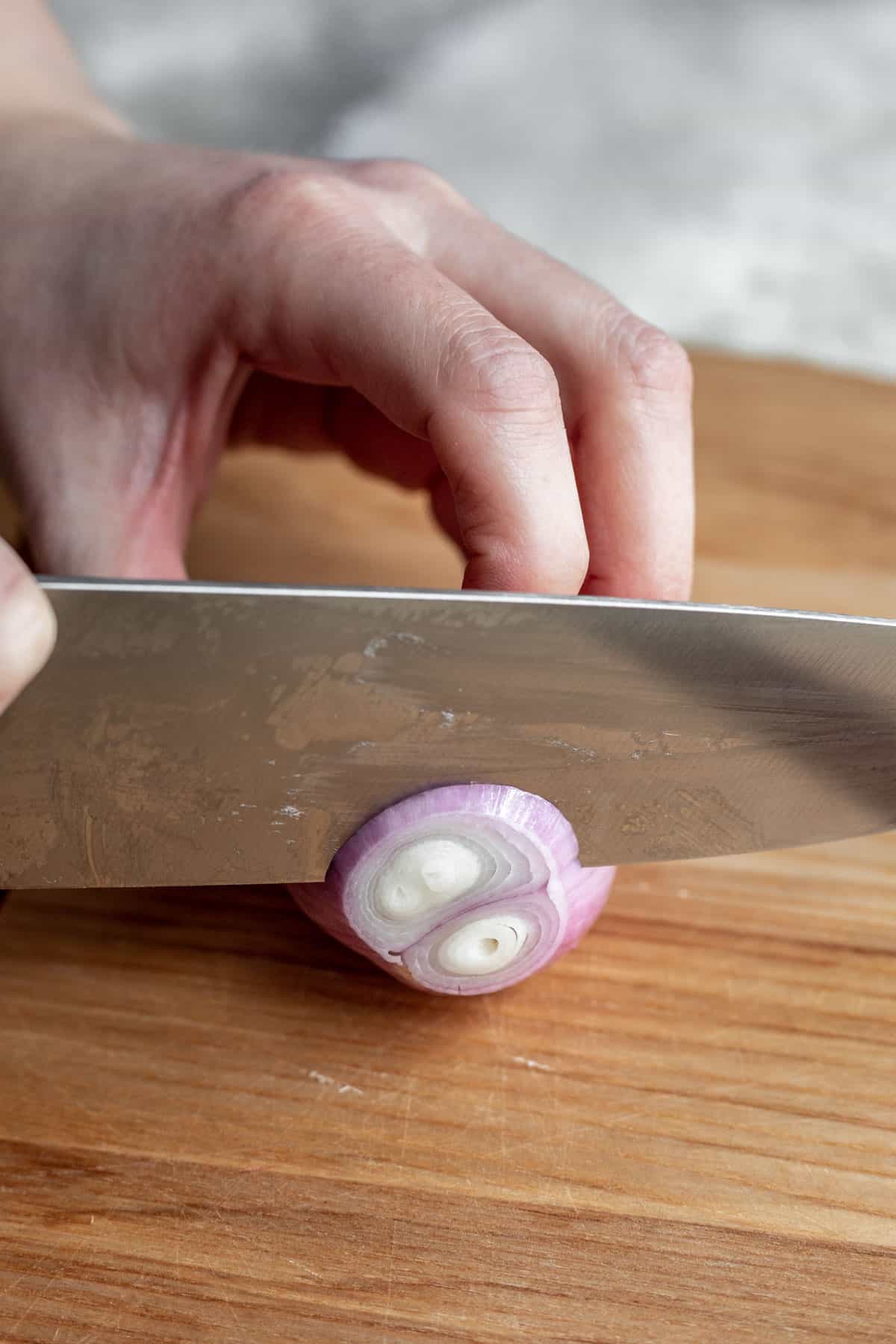
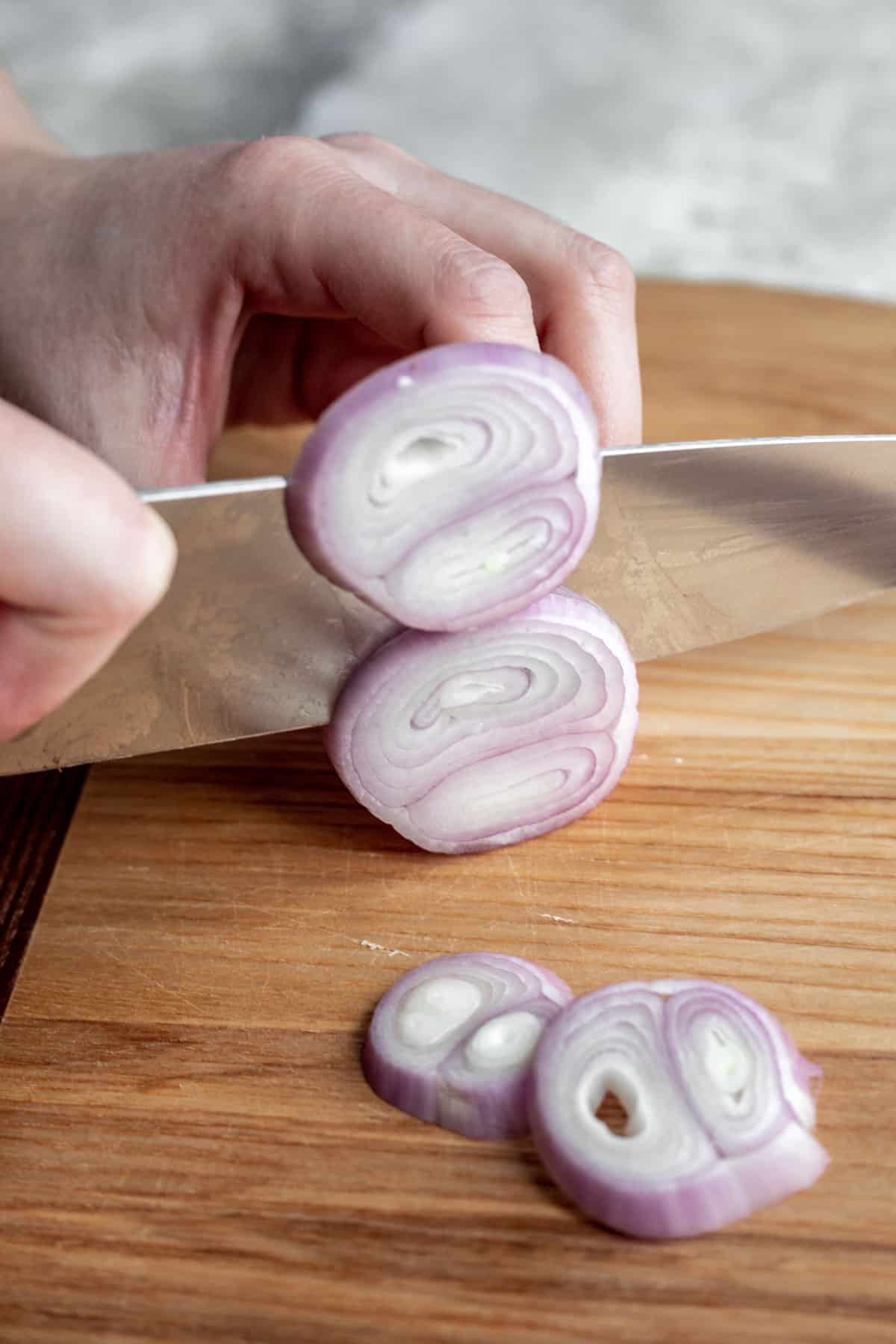
Depending on the recipe, you may slice thin or thick rings. The only thing to note is that you'll want to slice as uniformly as possible to ensure even cooking.
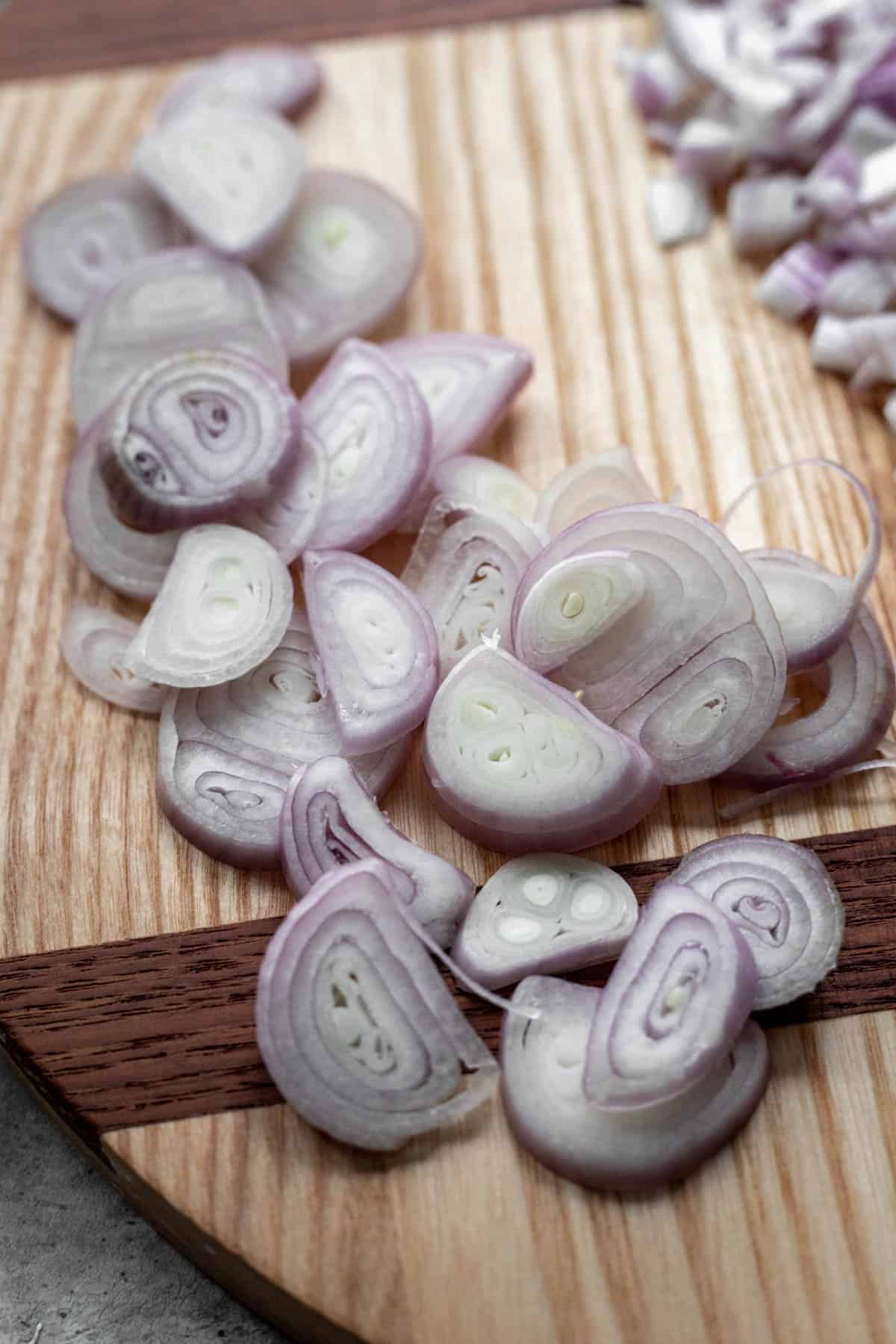
📓 How to Julienne
Slice the shallot lengthwise in half.
Place it flat side down on the cutting board. This is going to promote stability and make them much easier and safer to julienne.
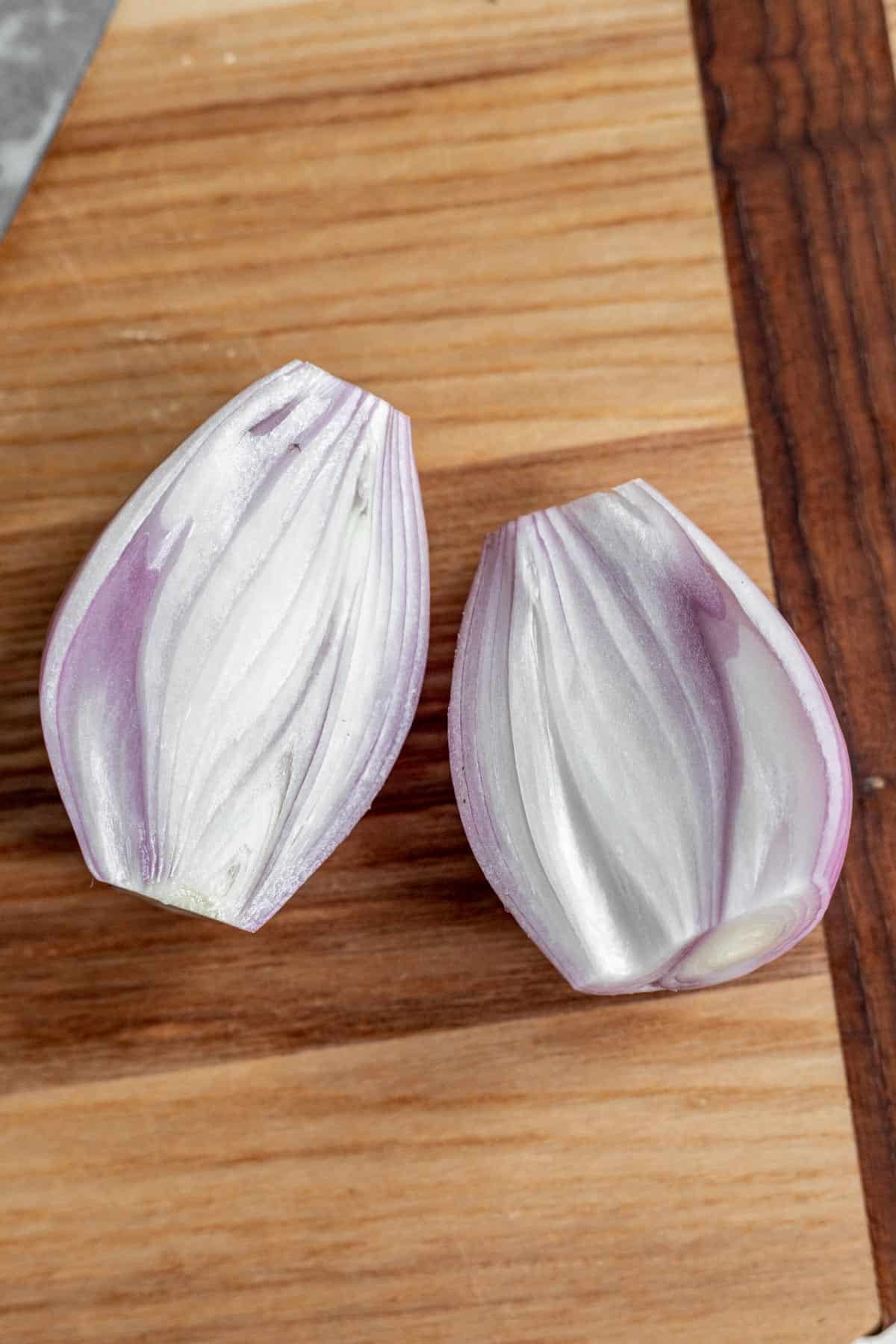
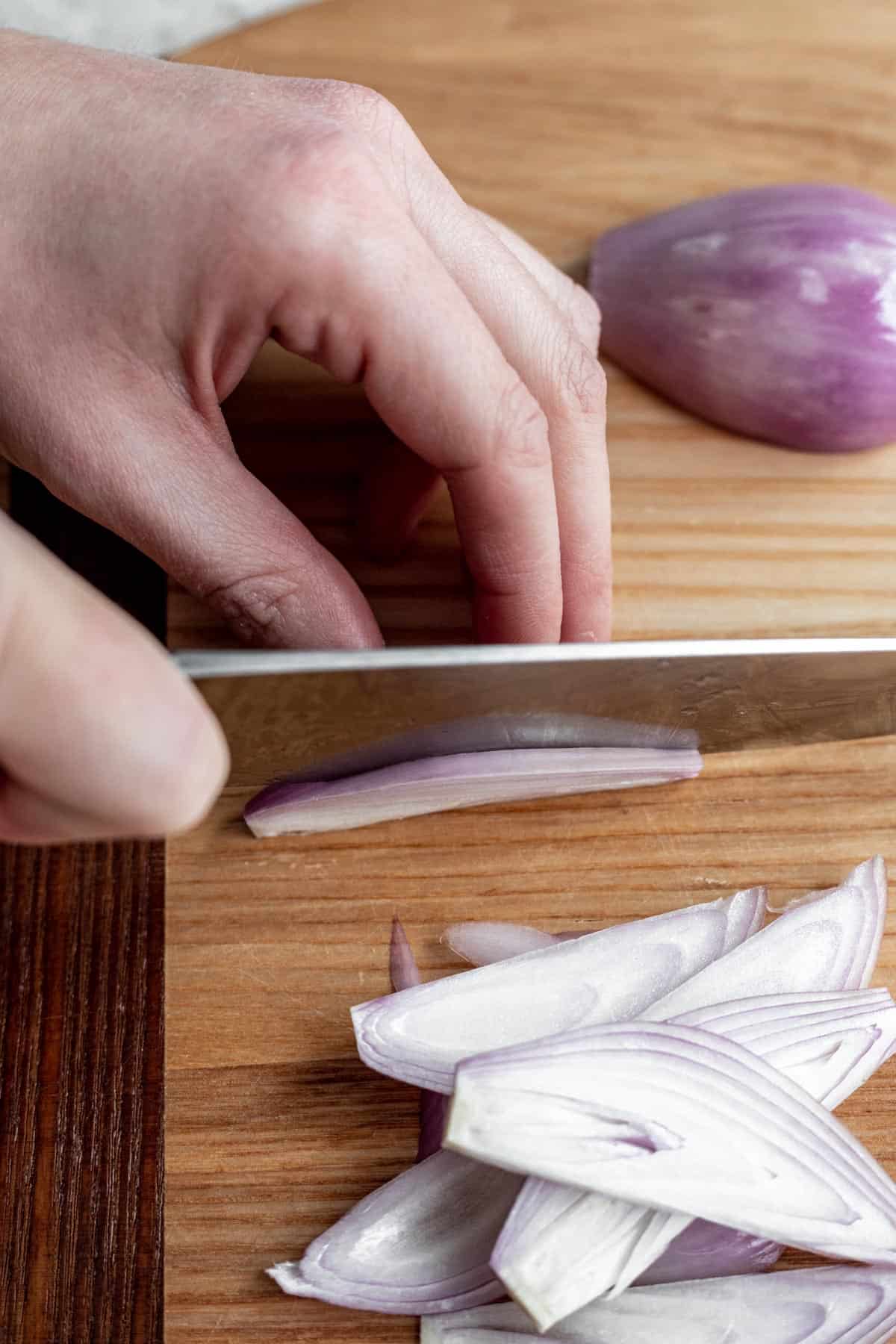
Slice lengthwise into thin, uniform strips.
Repeat with second half of the shallot.
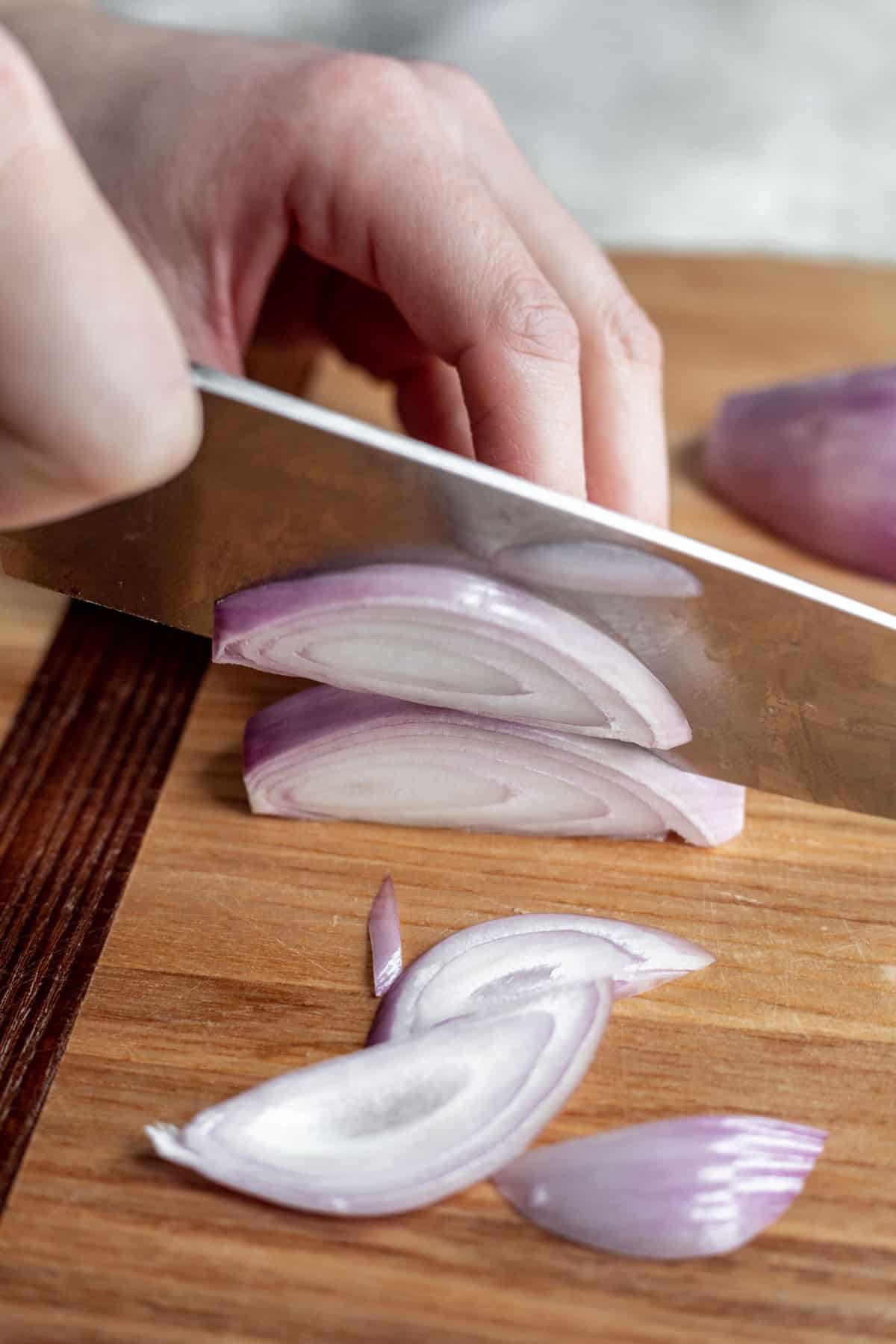
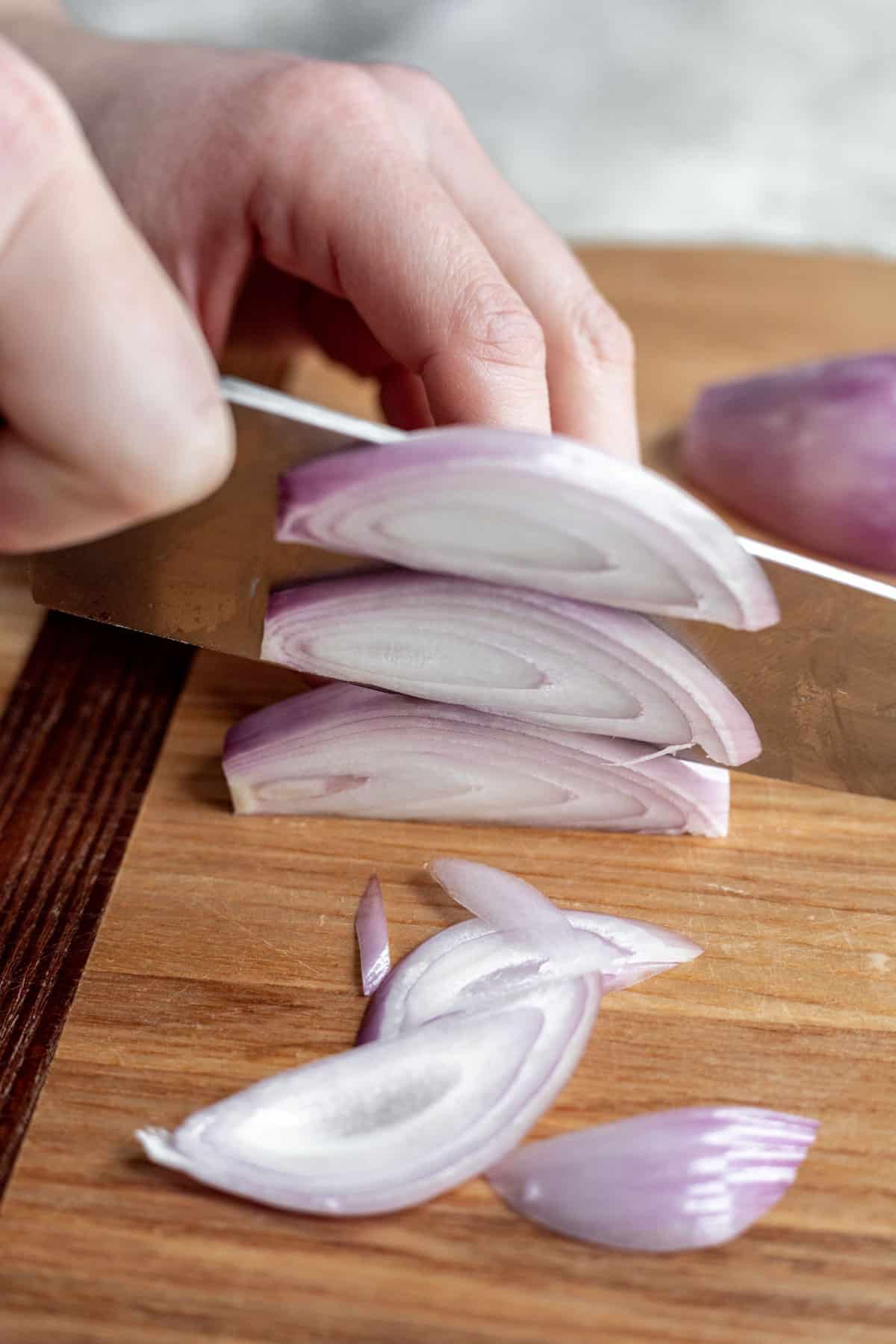
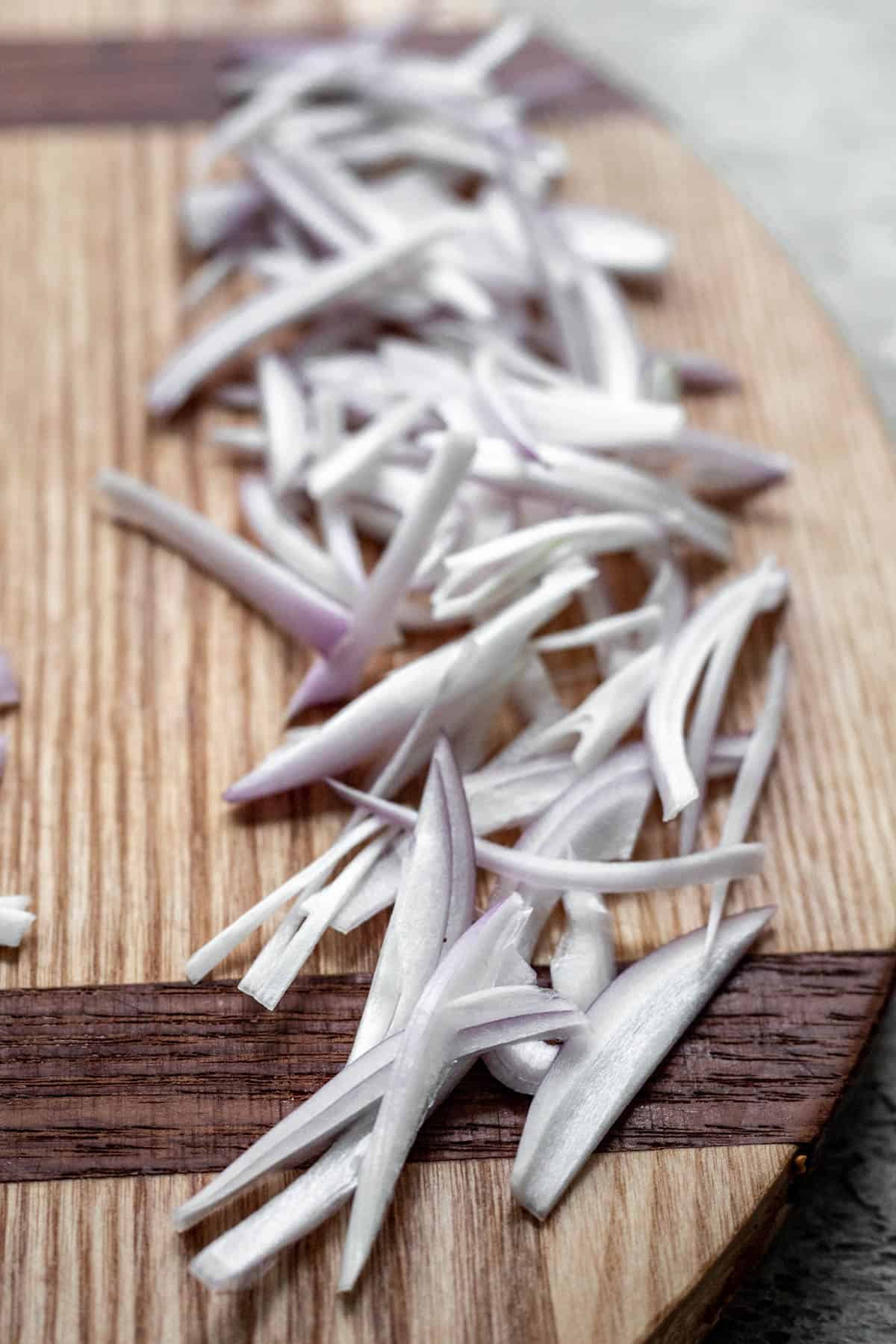
📓 How to Dice or Chop
Cut the bulb in half, leaving the root of the shallot fully intact.
With flat side down, slice the shallot lengthwise, slicing as close to the top of the root as possible, without cutting through the root.
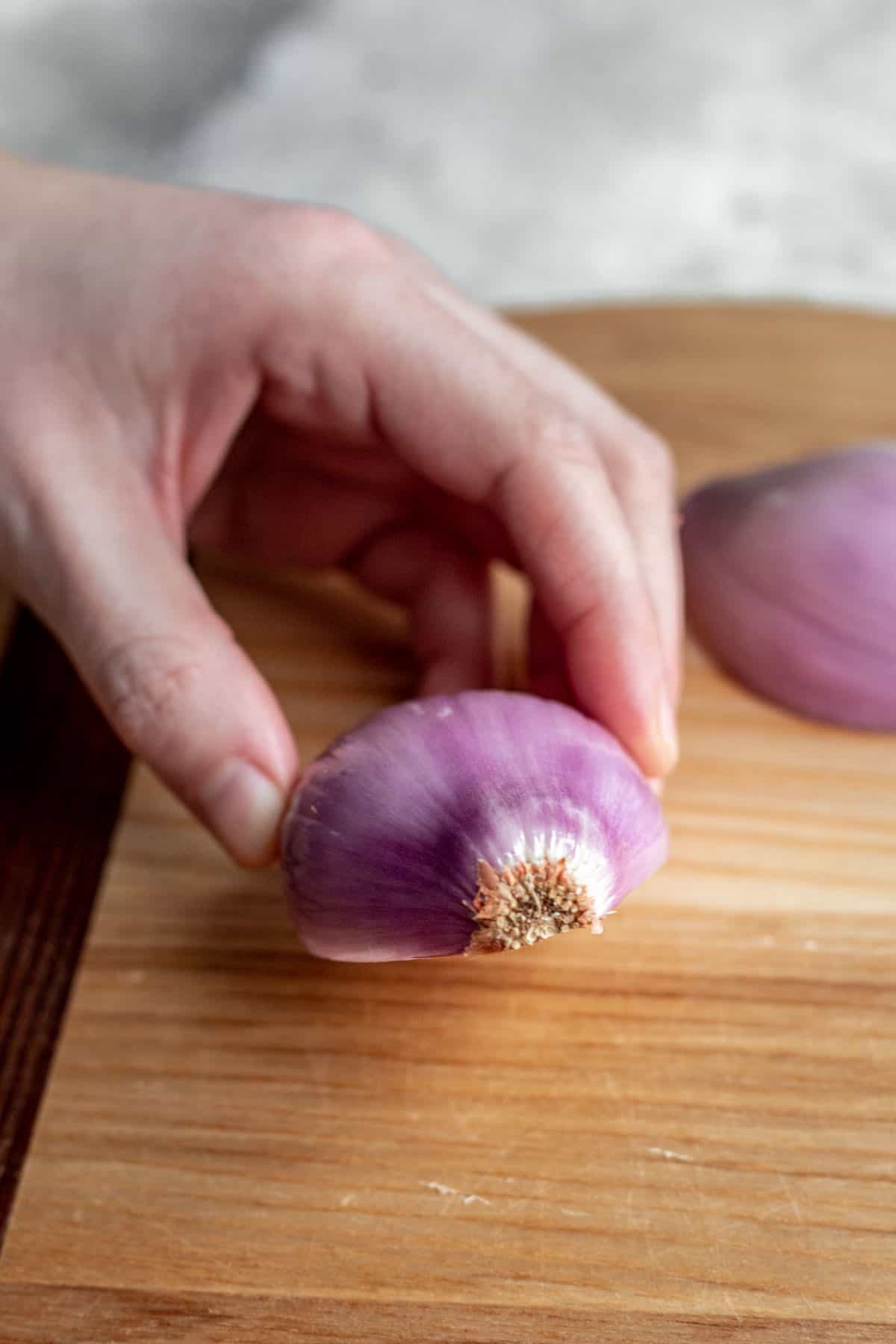
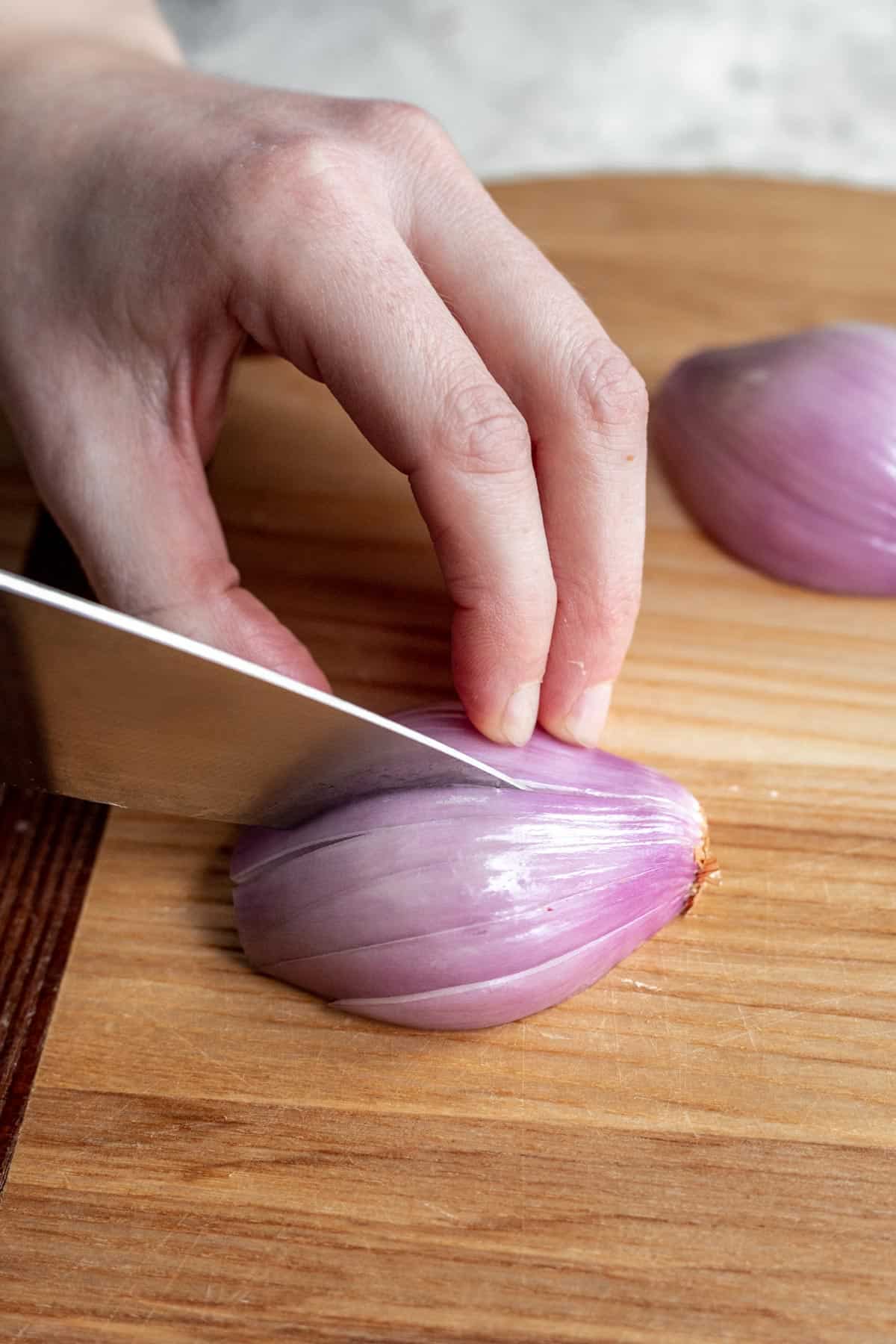
Turn the shallot and slice crosswise to create small squares or a dice. Keep going until sliced down to the root. Discard the root.
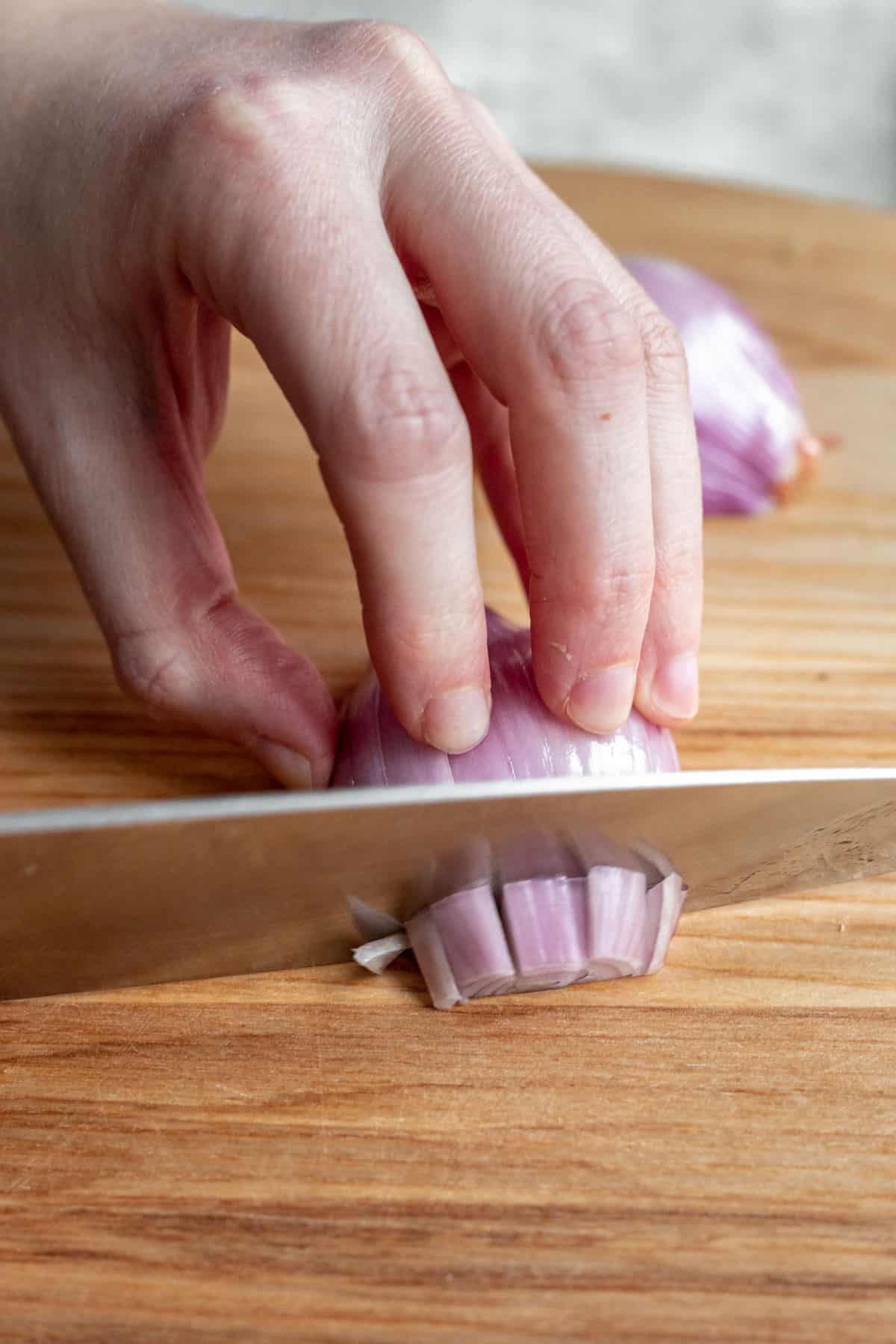
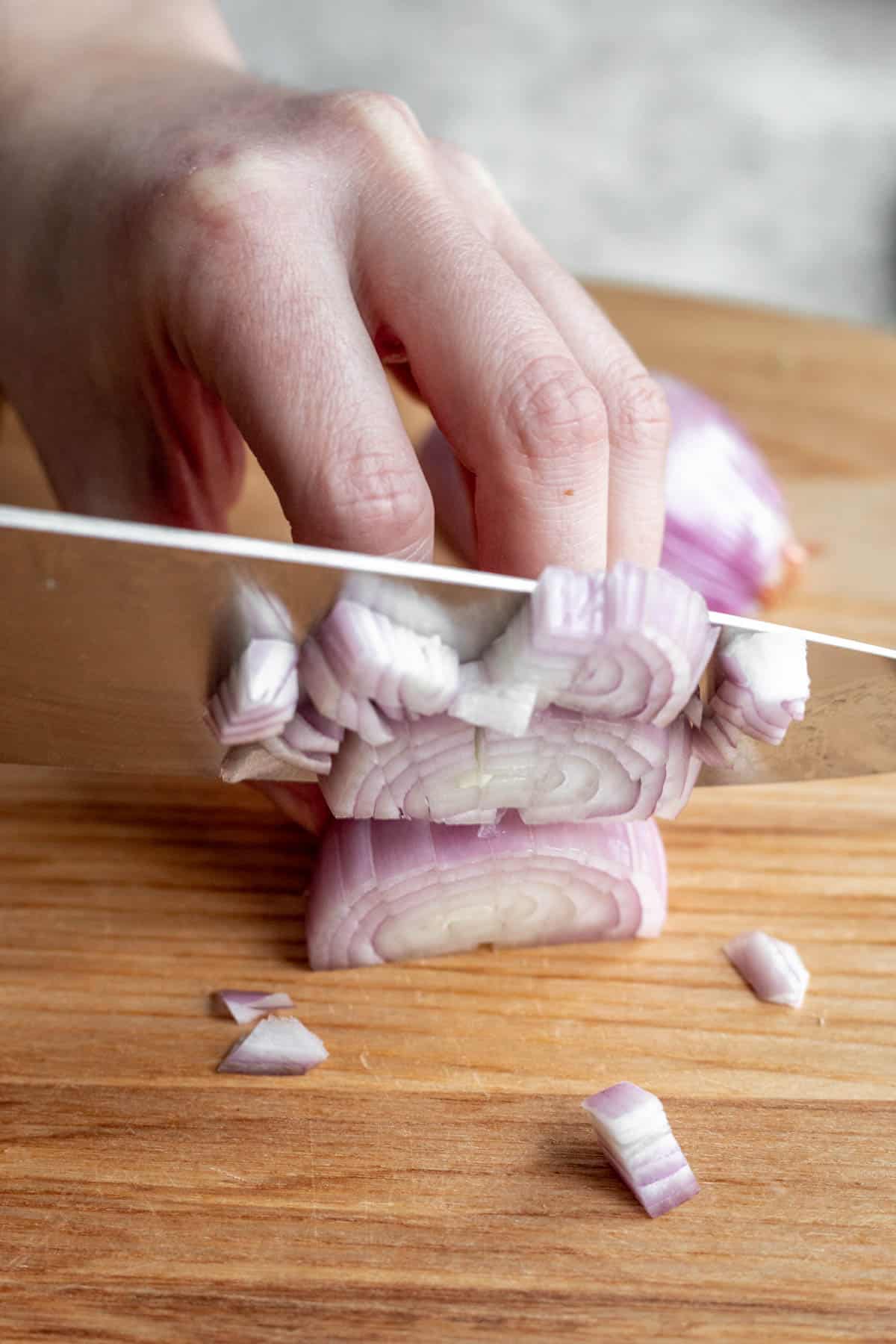
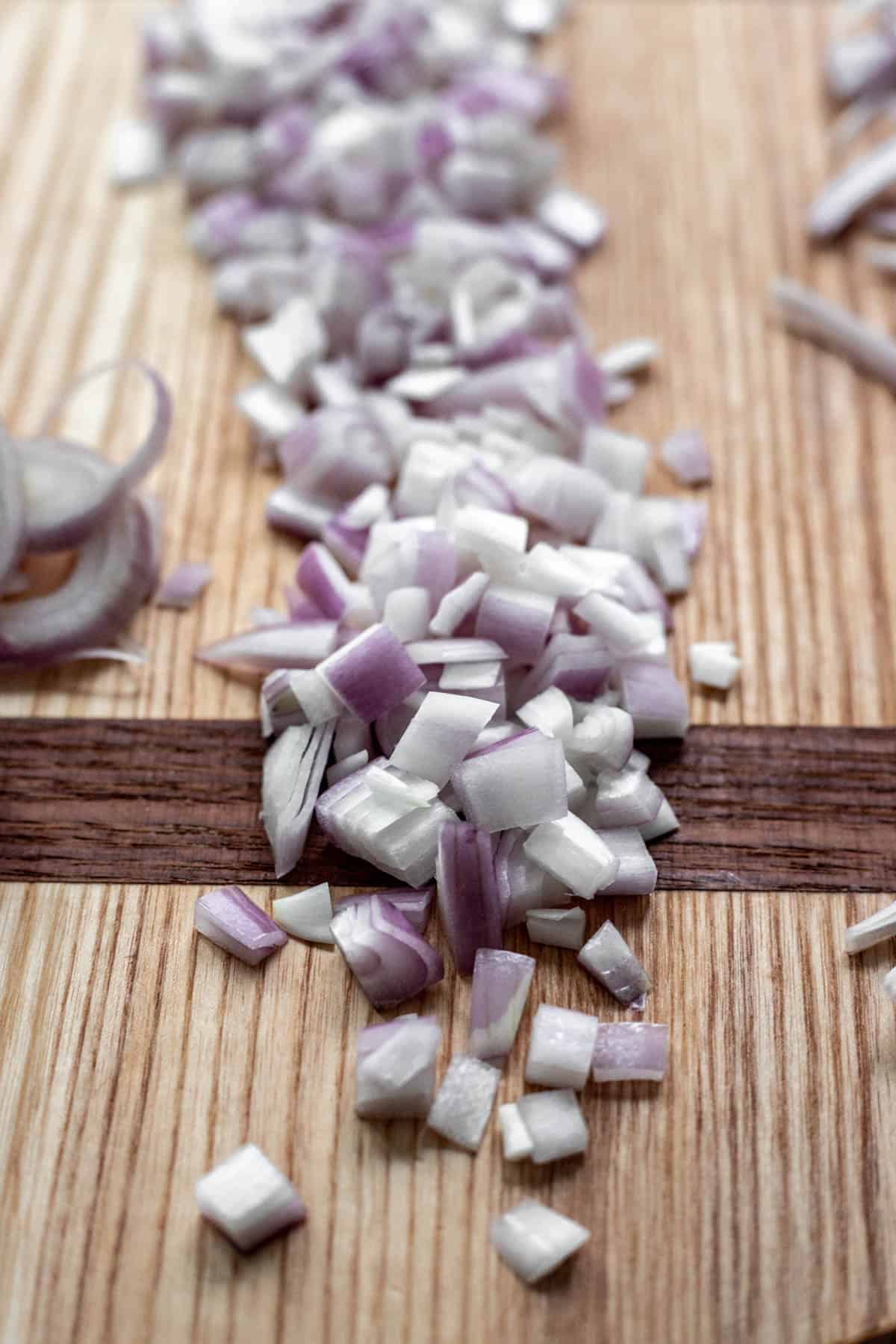
❄️ How to Store
To store whole shallots: Store whole shallots in a cool, dark place with room to breathe (similarly to how you would store onions). You will know they have spoiled or are beginning to spoil when they are sprouting, developing soft spots, have discoloration, or have a strong, off-putting odor.
To store cut shallots: If you need to store shallots once cut, do so in the refrigerator in an airtight container or zip top bag, with as much air removed as possible. You will want to use them within a couple of days for optimal freshness.
🍽 How Do you Use Shallots?
Shallots are extremely versatile and are used similar to onions in home cooking. The major difference is that shallots are milder in flavor.
- Shallot rings are great to use when frying crispy shallots, pickling or roasting shallots with vegetables.
- Julienned shallots work well in recipes like Healthy Chicken Marsala, Mediterranean Garlic and Olive Oil Pasta, and Air Fryer Crab Cakes.
- Diced shallots are great to add flavor and sweetness to homemade dressings. Try it in this Pumpkin Salad Dressing or in my mint chimichurri with Air Fryer Lamb Chops.
🔍 FAQs
Mincing a shallot is very similar to dicing a shallot, only the cut is smaller (about ⅛th inch thick).
Pick firm shallots that are not sprouting or soft in any spots. You also want them to feel dry - they should not feel damp as this generally means they are subject to mildew or early rotting.
Dicing is more precise, even slicing. You want diced shallots to resemble cubes. Chopping is usually a larger, more rough cut and does not need to be perfectly uniform.
💭 One More Tip
Make your cuts bigger or smaller depending on the recipe you're making. If eating raw, you might want smaller or thinner pieces. If cooking, you might want thicker so they do not burn.
Learn how to store, dice, and cook jalapeños in this similar tutorial!
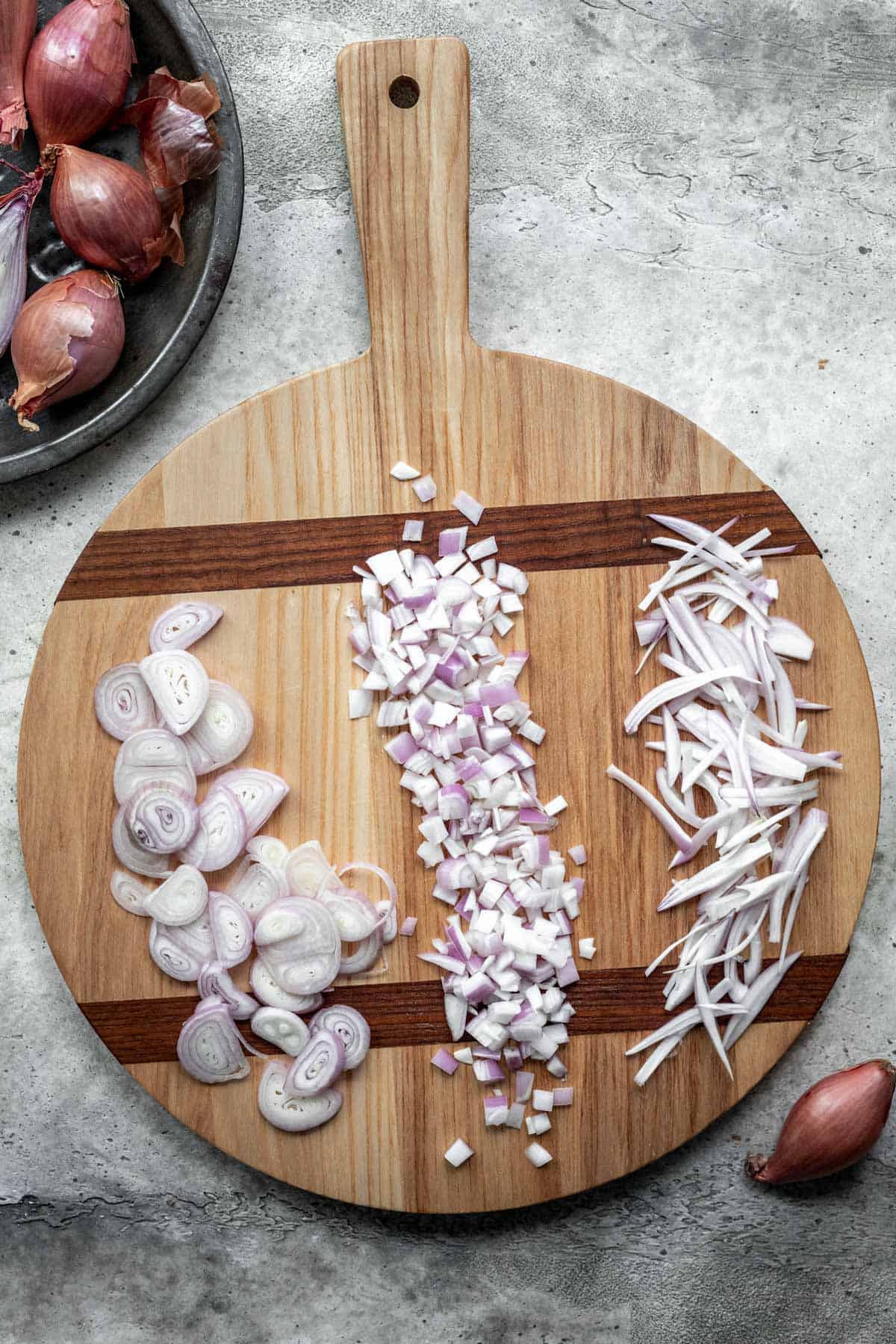
If you found this helpful, I'd love to know! Tag @yourhomemadehealthy on Instagram or leave a comment with a rating and some feedback at the bottom of this page!
🍴 Recipe Ideas
Need More Cooking Tips and Tricks?
- Learn how to cut romaine lettuce for salad.
- Cut and store asparagus so it lasts much longer in the refrigerator.
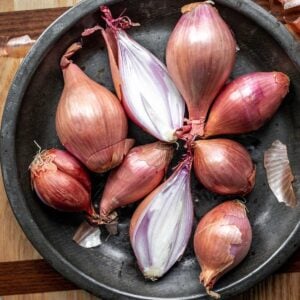
How to Cut Shallots (3 Ways!)
Equipment
Ingredients
- 1 shallot
Instructions
- Remove one or both ends of the shallot with a knife, exposing the inner bulbs of the shallot. If you are dicing, I recommend keeping the root intact and only cutting off the top end. This will make it simpler to keep the shallot together for uniform dicing. Peel away all outside layers of papery skin.
How to Slice Rings
- Simply keep the shallot fully in tact, then slice transversely into rings.
- Depending on the recipe, you may slice thin or thick rings. The only thing to note is that you'll want to slice as uniformly as possible to ensure even cooking.
How to Julienne (Slice Strips)
- Slice the shallot in half lengthwise.
- Place flat side down on the cutting board. This is going to promote stability and make them much easier and safer to cut.
- Slice lengthwise into thin, uniform strips.
- Repeat with second half of the shallot.
How to Dice or Chop
- Cut the shallot bulb in half, leaving the root of the shallot fully intact.
- With flat side down, slice the shallot lengthwise, slicing as close to the top of the root as possible, without cutting through the root.
- Turn the shallot and slice crosswise to create small squares or a dice. Keep going until sliced down to the root. Discard the root.
Notes
- Make your cuts bigger or smaller depending on the recipe you're making. If eating raw, you might want smaller or thinner pieces. If cooking, you might want thicker so they do not burn.
- To store whole shallots: Store whole shallots in a cool, dark place with room to breathe (similarly to how you would store onions). You will know they have spoiled or are beginning to spoil when they are sprouting, developing soft spots, have discoloration, or have a strong, off-putting odor. To store cut shallots: If you need to store shallots after they're cut, do so in the refrigerator in an airtight container or zip top bag, with as much air removed as possible. You will want to use them within a couple of days for optimal freshness.
Nutrition
Want more cooking tips like this delivered right to your inbox? Be sure to subscribe above and never miss a thing!

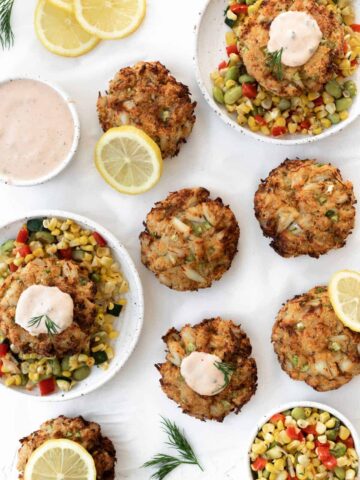
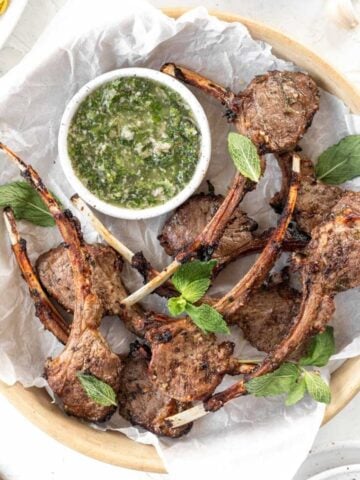
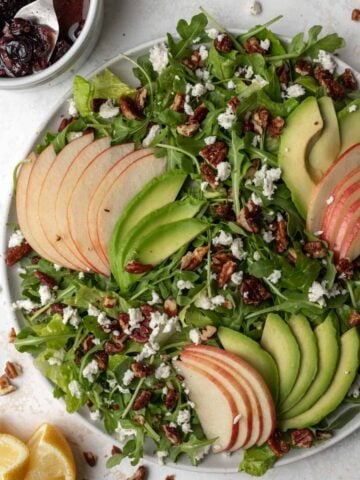
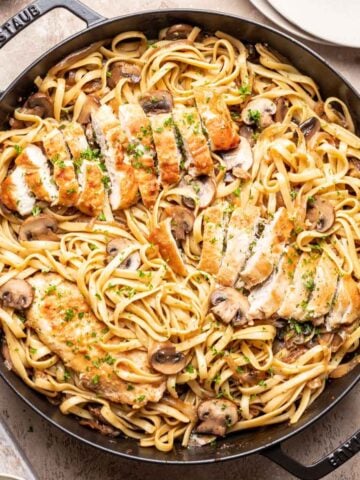
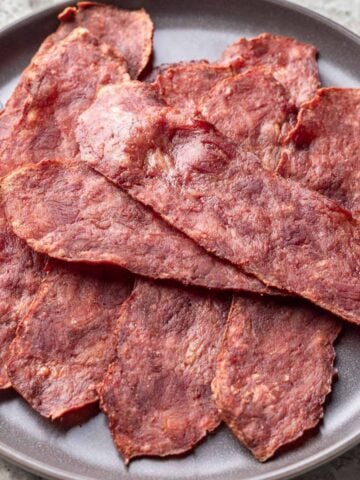
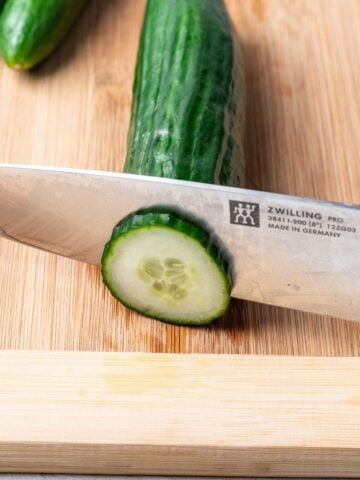
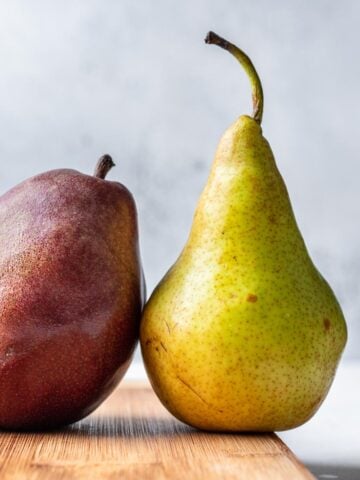
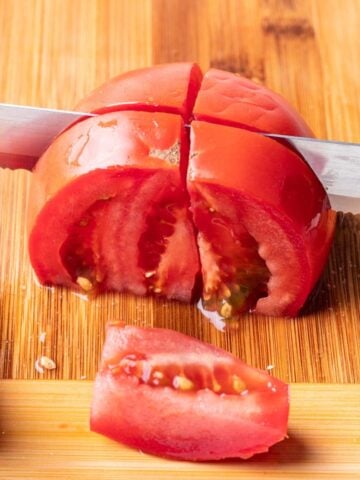
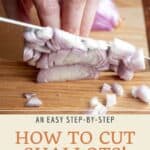
Stacy says
This was very informative. Thank you for the tips!
Alana Lieberman says
Happy to help 🙂